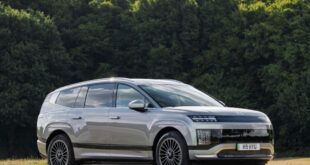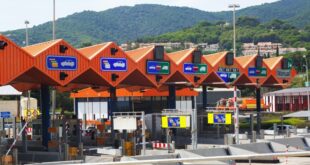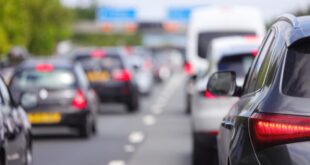Spain’s new traffic signs—like the ‘2+’ lane for cars with at least two people—are changing the rules for drivers and cyclists.
Credit : Dgt.es
If you’ve hit the Spanish motorways lately, you may have spotted a new bit of road furniture – a bold blue sign, a car with two people in it, and the mysterious ‘2+’ symbol alongside a big arrow.
This sign is easy to ignore or miss at first, especially when you are concentrating on your sat nav directions or looking out for speed camera. But this sign is about to change the way many drivers use Spain’s busiest roads—and ignoring it could land you with a €200 fine.
What is going on? Spain’s traffic authorities (DGT) have quietly rolled out these new ‘2+’ lanes across key routes, and they’re catching more than a few motorists by surprise. S-51b is the official sign, but the real meaning is that it is reserved for high-occupancy (HOV) vehicles, which carry at least 2 people including the driver. The aim is simple—cut down on solo driving, ease congestion on packed stretches, and help the country hit its climate goals by getting more people to share a ride.
Who’s allowed in Spain’s ‘2+’ Lane and who’ll get fined?
Before you start panicking and counting the number of cars in your rearview mirror, let us explain who is allowed to use these lanes. Basic rule: Cars, vans of up to 3,500kg, and even motorbikes are allowed, provided there are at least two people aboard. It is possible to have a passenger ride on your motorcycle. There are, however, some interesting exceptions in Spain.
Firstly, all official ride-hailing cars like Uber, Cabify and buses are allowed to take the lane, even if no one is in the backseat. It’s the same story for ambulances, fire engines, and police cars—common sense, really. The lane is available to carsharing vehicles that have a clear identification, regardless of whether they are traveling with a friend or alone.
And here’s a twist—drivers with a V-15 badge for disability are given special access to the ‘2+’ lane, even if they’re on their own, as long as their badge is visible. Electric and ‘zero-emissions’ cars also get perks: depending on the information shown on electronic signs, you might be able to zip through solo if your vehicle qualifies. Sometimes, the rules will change for eco-labelled cars (ECO, C, or B), based on pollution levels or heavy traffic – so it’s always worth keeping an eye on those variable panels above the road.
Shortly, don’t assume that you are in the clear because there is a free seat next to yours. The new ‘2+’ lanes are well monitored, with traffic police and cameras on the lookout for anyone sneaking through alone.
What happens if I get it wrong?
Tempted to chance it and sneak into the ‘2+’ lane on your own? It’s not worth it. Spanish authorities have made it clear: if you’re caught in the high-occupancy lane without at least one passenger, you’ll be hit with a €200 fine. The good news? You won’t lose any points on your license. It’s a rude surprise to anyone who thought they could get around the system.
This is not a punishment for drivers’ sake. The real goal, according to officials, is to encourage carpooling and make roads safer. They also want the problem of traffic congestion on Spain’s most busy stretches addressed. This is all part of the larger push to reduce pollution and encourage smarter driving.
The next time you go on a trip, pick up friends from an airport, or commute into town to work, keep that blue sign in mind. Take a look at the electronic panels and the number of cars in the area. Be safe. By following the latest Spanish road rules, you will not only be able to keep traffic moving but also prevent costly lessons.
A new era for Spanish Roads?
In the end, these new ‘2+’ signs are a sign of changing times. As more cities across Europe try out carpool lanes and eco-friendly driving schemes, Spain is joining the club—hoping to ease the strain on its roads and improve life for everyone behind the wheel.
 Costa News Spain Breaking News | English News in Spain.
Costa News Spain Breaking News | English News in Spain.





